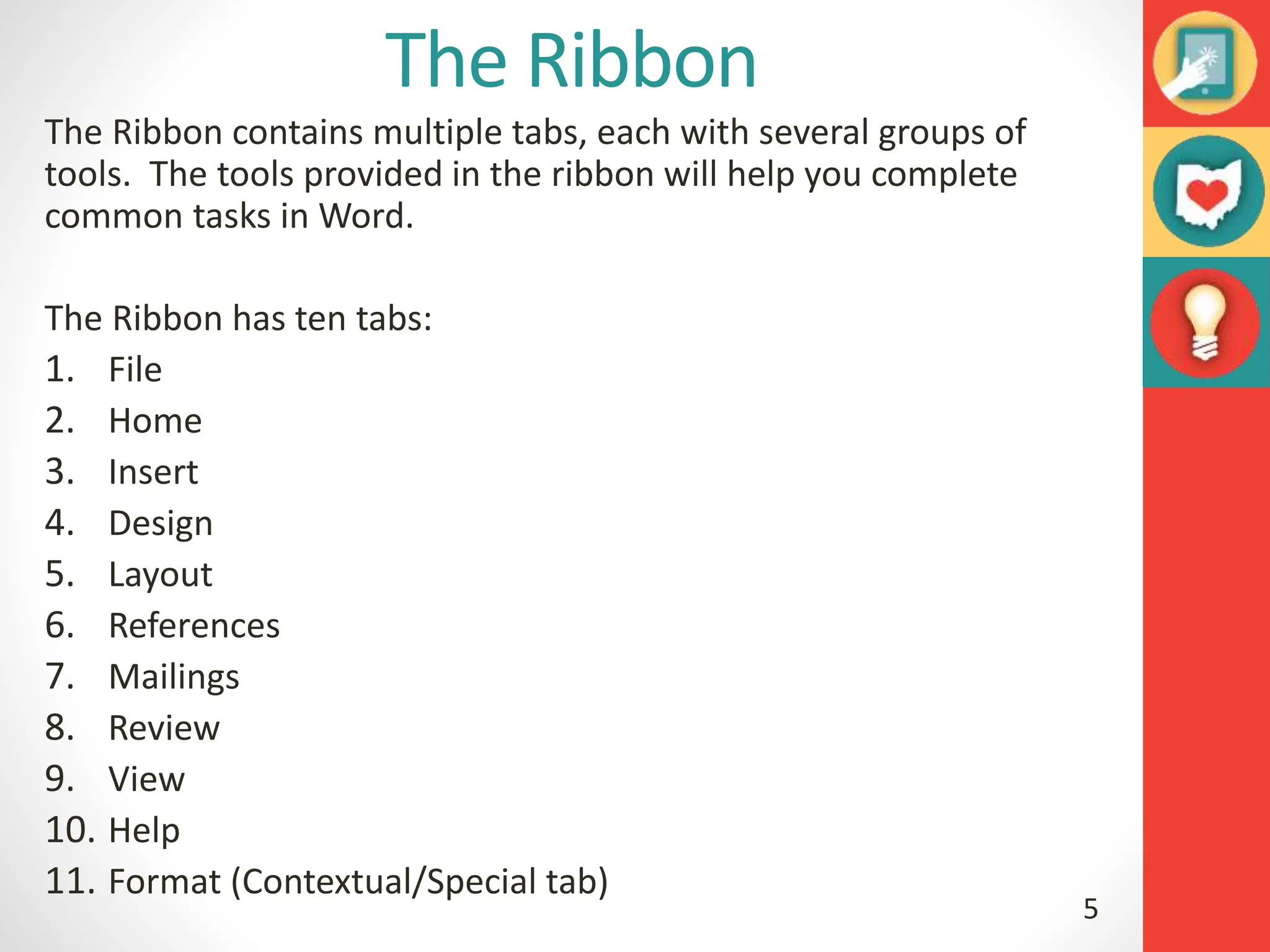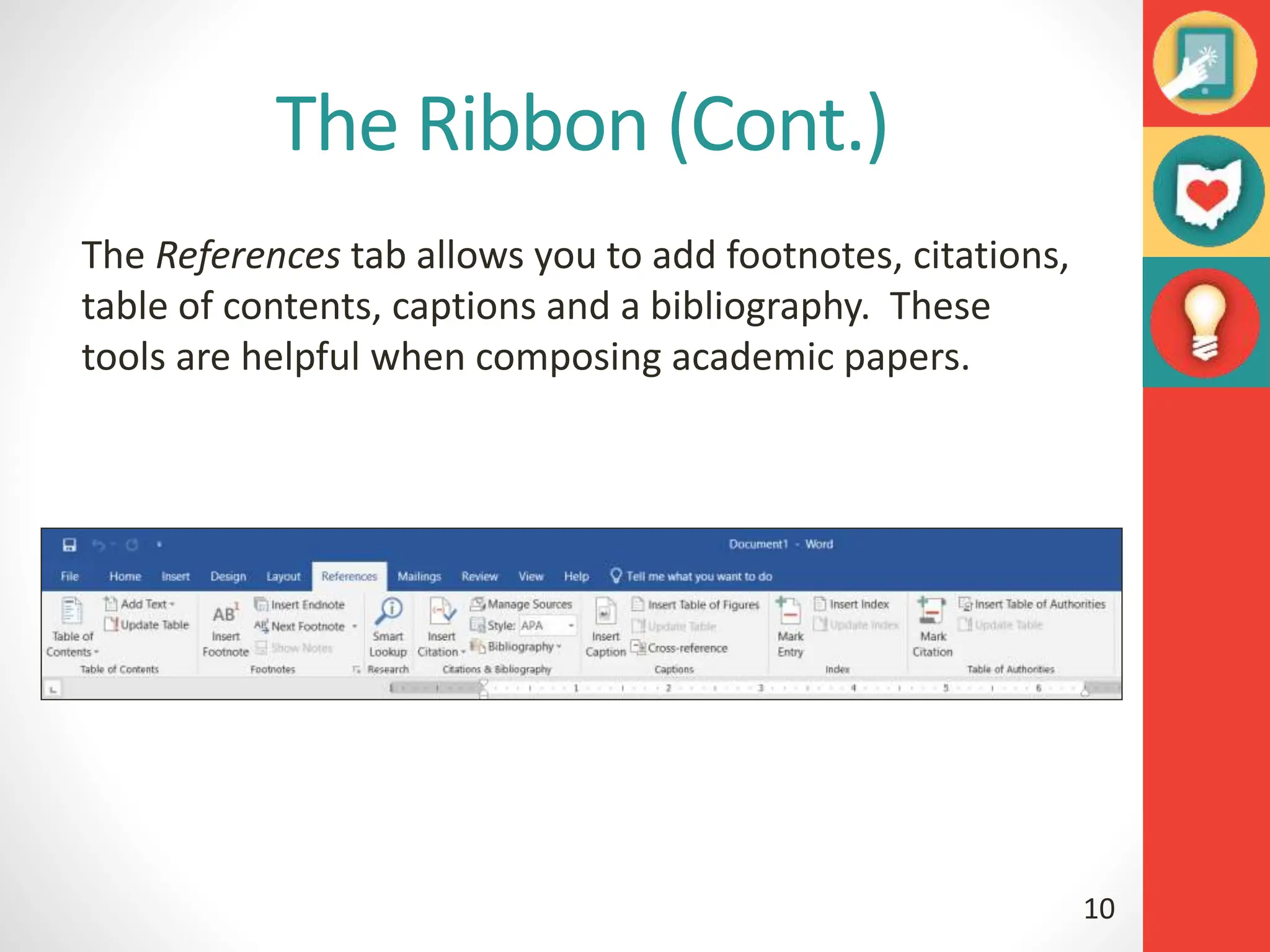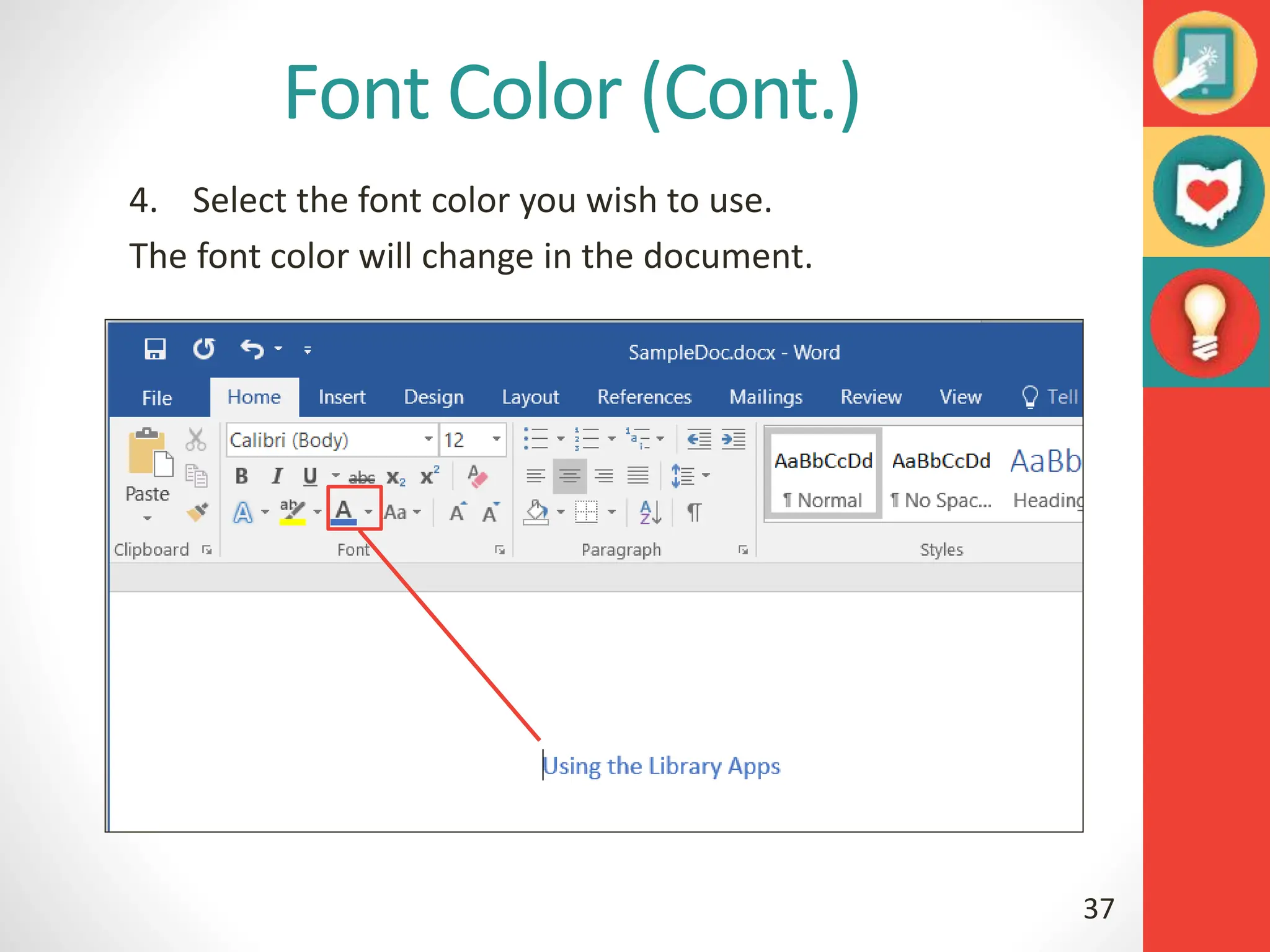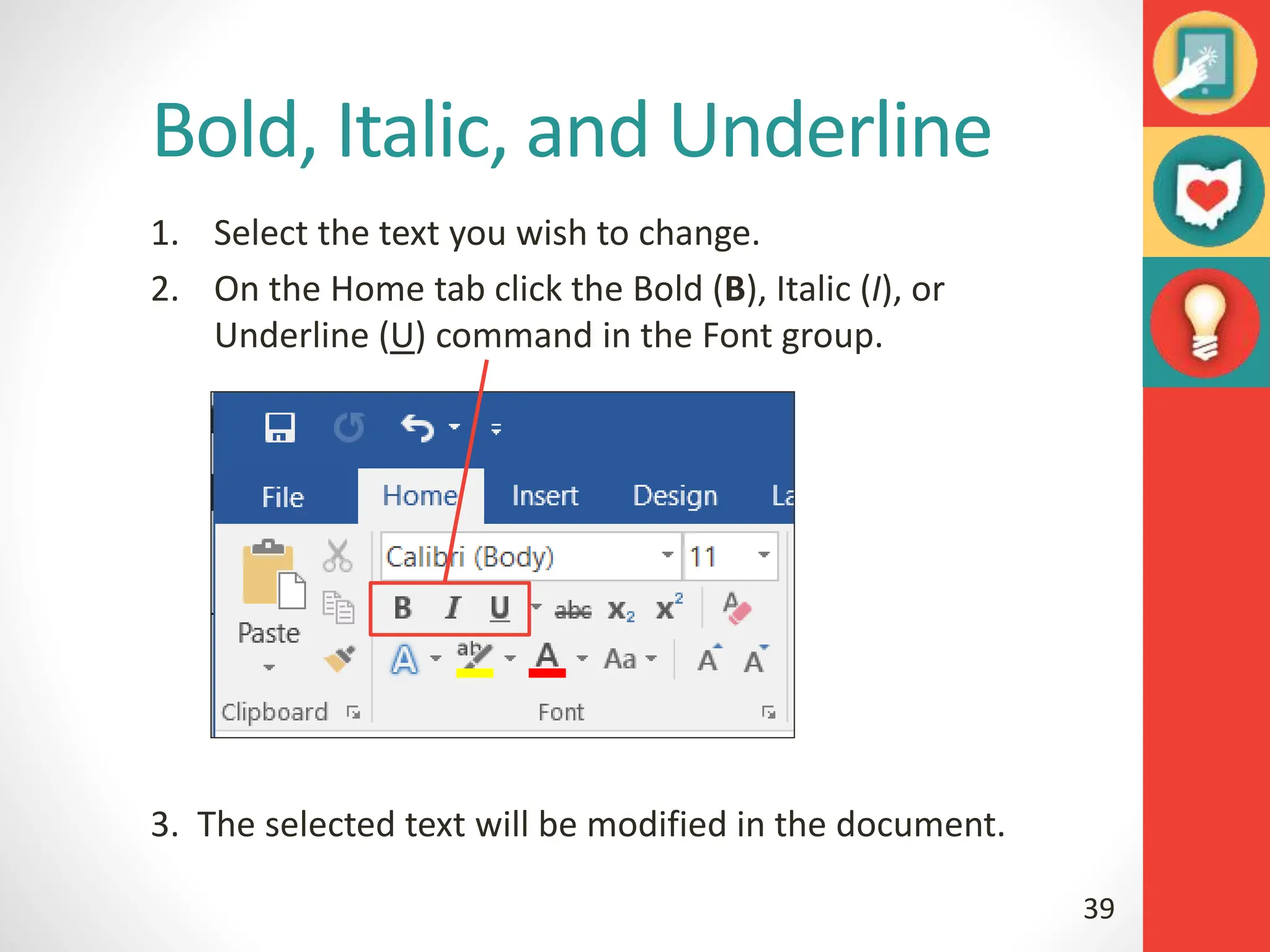Microsoft Word 2016 is a versatile word processing application that allows users to create documents such as letters and reports, featuring an interface that includes the ribbon, the quick access toolbar, and various document views. The ribbon offers ten tabs with tools for formatting, inserting images, editing, and reviewing content, while the quick access toolbar provides easy access to commonly used commands. Additional functionalities include options for saving, exporting files, and modifying text attributes such as font and alignment.


























































